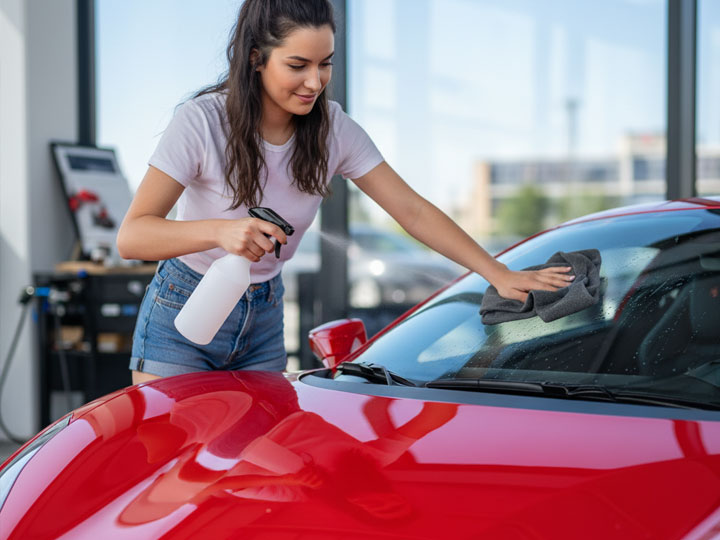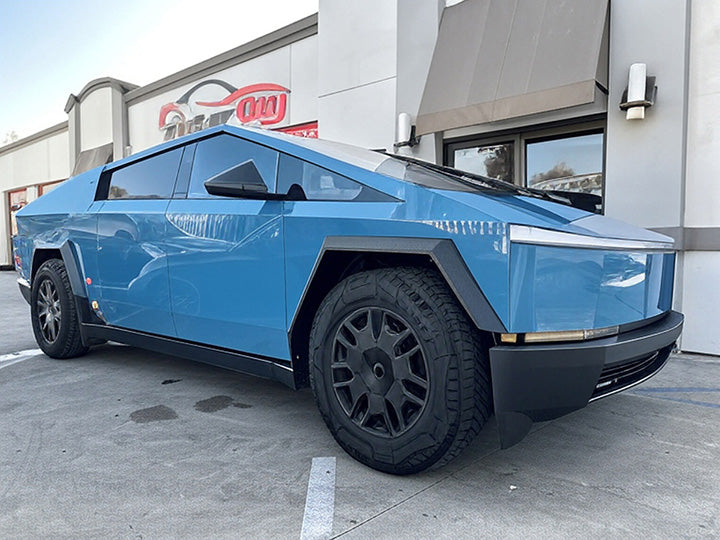The Grand Illusion: Ceramic Coating vs. the Rock Chip Threat
You've just driven off the lot, the leather smelling of a thousand pleasant compromises, the paint deeper and slicker than a politician's promise. And what's the first thing some well-meaning chap pitches to you? A windshield ceramic coating, of course! A wonderful, glossy exoskeleton that makes water bead up like mercury and keeps the finish clean for a biblical stretch of time. It's automotive skincare at its finest.
But let's not confuse skincare with plate armor.
The great myth—the one perpetuated by well-meaning but ill-informed enthusiasts—is that a ceramic coating will save your beautiful, swept-back windshield from that wretched, wallet-shredding, coin-sized rock launched from the tread of a passing semi.
Let me be perfectly clear, like the finest crystal on a Duesenberg’s cocktail bar: A glass ceramic coating does not protect against rock chips. It is merely a surface treatment, providing water repellency and some defense against minor surface scratches. It enhances the gloss; it does not stop shrapnel. If your search intent is genuine, high-impact rock chip defense, you need to turn your gaze toward the heavy artillery: the dedicated windshield protection systems.

The Heavy Artillery: XPEL Windshield Protection Film (WPF)
Now we’re talking about a proper defense mechanism. The world of film protection has evolved beyond the sticky, yellowing vinyl of yesteryear, and today, XPEL Windshield Protection Film (WPF) represents the state-of-the-art. This isn't some quick-detail spray; it’s a physical, multi-layer urethane film engineered specifically to take a licking and keep the glass looking new.
What it is: XPEL WPF is designed to physically defend the glass against high-impact debris—the very rocks and road grit that shatter tranquility and trigger four-figure repair bills. It acts as a sacrificial layer. The rock hits the film, the film absorbs the impact, and the glass remains unharmed. Think of it as a clear-coated catcher's mitt for your windshield.
Why it matters: The cost of replacing a high-end vehicle windshield—and I’m talking about your Teslas, Porsches, and the more complicated Mercs—can easily run from $3,000 to $5,000. The XPEL film is a preventative measure, costing a fraction of that, with the added benefit of UV protection and a 1-year warranty. For the sensible man, that's a cost-benefit equation that demands attention. And should you be a patron of Paint Protection Film (PPF), you'll often find a neat little $150 package savings on the WPF. A gentleman always appreciates a discount, even if he doesn’t need it.
| XPEL WPF: The Facts (Targeting Search Intent) |
| Primary Protection Intent: Physical defense against high-impact debris (rocks/chips). |
| Financial Intent: Prevents repairs or replacement that can cost $3,000-$5,000. |
| Key Benefit: Maintains optical clarity for perfect, unobstructed vision. |
The Atomic Option: C-Bond NanoWindshield Glass Strengthening
But wait, there’s a new frontier in glass defense, something that appeals to the engineer in all of us: nanotechnology. This is where C-Bond NanoWindshield steps onto the stage—a distinctly different solution that works not on the glass, but in it.
C-Bond is a patented, liquid nanotechnology. Upon application, it permeates the microscopic flaws and defects inherent in the glass structure itself. The formula then creates a covalent bond with these imperfections, dramatically increasing the mechanical strength of the glass.
The Key Difference: Unlike a surface film, C-Bond strengthens the glass from the inside out. The documented result is a windshield strengthened by 40% to a whopping 80%. This is a subtle, elegant solution that decreases damage from chips and cracks by up to 80%, improves visibility, and adds a water-repellent layer for easier driving in the inevitable deluge.
It’s a truly cost-effective approach, priced at a mere $150.00 per windshield. The only catch? For optimal results, this atomic defense should be reapplied annually. It's maintenance, not permanence.
| C-Bond NanoWindshield: The Fine Print (Targeting Search Intent) |
| Primary Protection Intent: Strengthens glass structure internally by 40-80%. |
| Financial Intent: Highly cost-effective at $150.00. |
| Key Caveat: Must be reapplied annually. |
The Judgement: Which Shield is Right for Your Road?
So, how does a discerning enthusiast choose?
-
For the Detailer (Cosmetic Intent): If your only concern is making the glass easier to clean and providing minor surface scratch resistance, the standard ceramic coating is fine. Just remember: it’s a Teflon smile, not a bulletproof vest. It is not designed to prevent rock chips.
-
For the Enthusiast (Maximum Impact Intent): If your primary goal is the maximum physical defense against high-impact debris—the kind of prevention that keeps a factory Porsche windshield on the car—the XPEL Windshield Protection Film is your champion. It’s the superior, dedicated defense.
-
For the Value Engineer (Cost-Effective Strength Intent): If you desire significant strength enhancement and improved visibility on a budget, the C-Bond NanoWindshield is the remarkably affordable answer. At $150, its ability to strengthen the glass by up to 80% is simply compelling.
Ultimately, investing in true windshield protection is absolutely worthwhile. It is the difference between peace of mind and the sudden, heart-sinking sound of a highway projectile hitting your thousand-dollar pane. Choose wisely. Choose with conviction.




Leave a comment
This site is protected by hCaptcha and the hCaptcha Privacy Policy and Terms of Service apply.